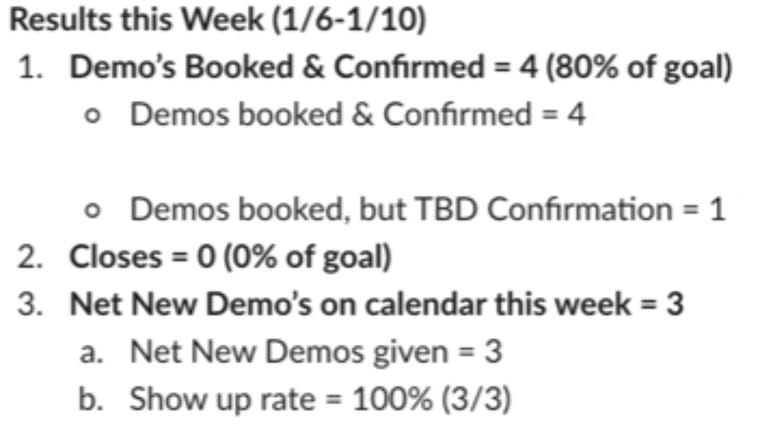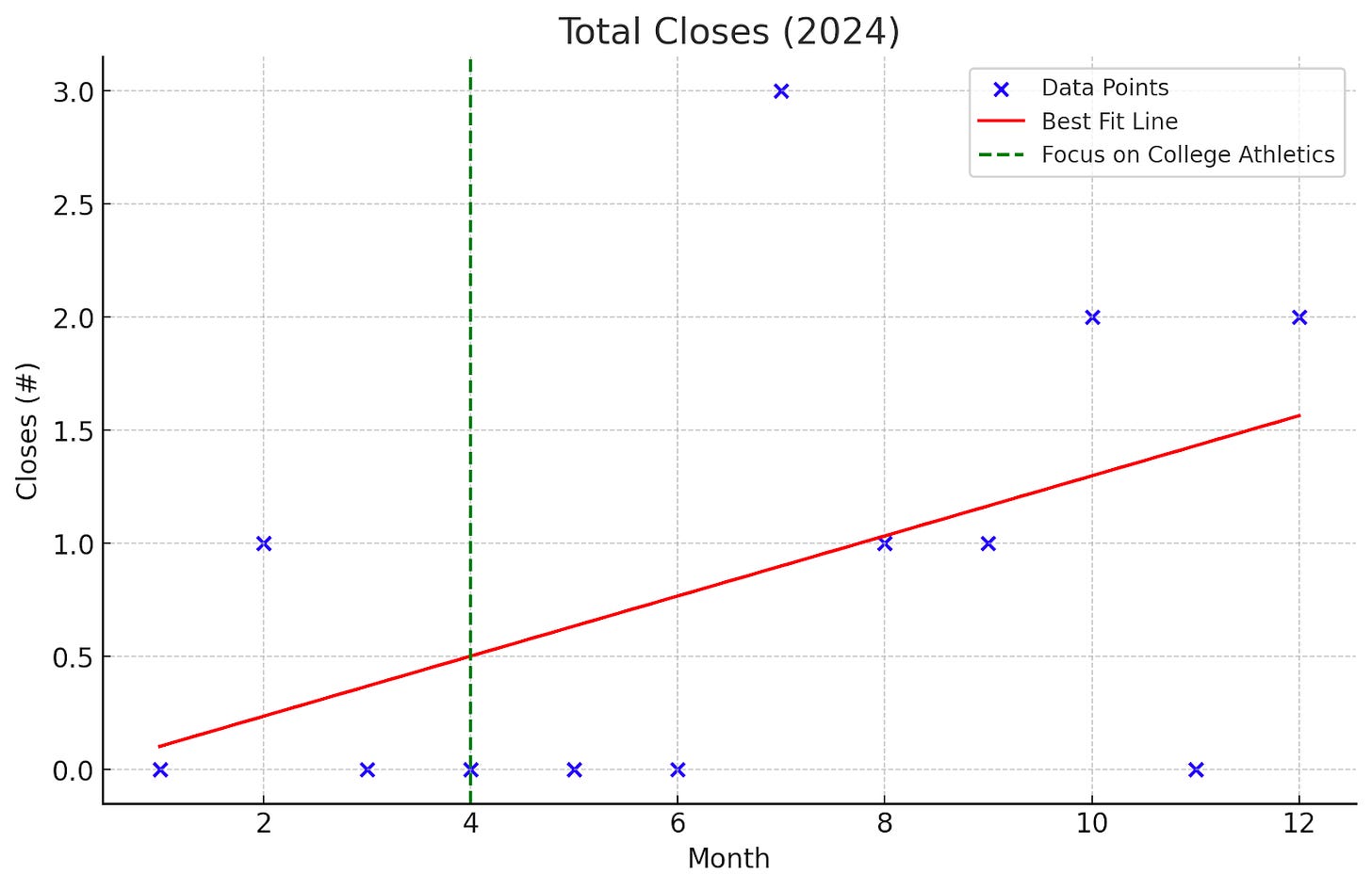“Progressing toward a stretch goal is like pushing a boulder down a gently sloping hill. Every inch feels like a Herculean effort. But with each small movement, the next becomes easier. And when the boulder finally catches speed, you’re strong enough to find a bigger one to push.” – Grant Varner
Metrics That Drive Early Sales Success
Outbound sales should be the tip of the spear in the $0-300k ARR stage of building a SaaS startup.
The primary goal at this stage is to reliably get every salesperson’s calendar filled with meetings with prospects, backed by data.
In the same way apps like Happy Scale help you evaluate aggregate trends in your weight, ignoring daily fluctuations due to water retention and other factors, your approach to SaaS sales metrics should follow a similar principle.
You will improve your sales results with two core principles:
K.I.S.S.: Keep it simple, stupid!
What you measure, you improve.
Keep It Simple, Stupid!
The metrics you track should be so simple, a caveman can do it (shoutout GEICO caveman!) You should be tracking:
# of activities,
# of demos booked,
# of demos completed,
# deals closed, and
$ contract value.
From these five metrics, you can derive a host of other secondary metrics that you evaluate on a weekly and monthly basis. Keep it simple!
What You Measure, You Improve
You should use a combination of weekly and monthly reports to make sure you’re on track month to month.
Weekly Reports: Your weekly reports should be entirely focused on leading indicators: # of activities, # of meetings booked & completed, cold email to meeting rate, and cold call to meeting rate.
Monthly Reports: Your monthly reports are more focused on top line growth: meeting to customer rate, average contract size, new MRR, and CAC.

In this way, you can incrementally adjust your sales process based on aggregate data, rather than making daily changes based on natural fluctuations of results.
Improving Lead Generation and Closing
Once you have a steady flow of data on a weekly and monthly basis, now you can begin optimizing each step of the sales process, of which there are two: lead generation and closing.1
Lead generation is purely a measure of meetings booked. You should break it down into demo’s booked & confirmed, and net new demos on calendar this week, and net new demos completed.
The goal here is to get an accurate view of the future forecasted pipeline. When your demos bookings go up, you’ll know that you have a predictable pipeline coming in the future.
Closing is purely a measure based on deals closed, and data about each of those deals. # of deals closed, contract value, and contract duration are the most important data points.
The goal here is obviously to get more new customer ARR.
You should strive to get the maximum amount of money from each new customer without losing the deal.
You just want to acquire new customers at any price, no matter the cost in order to get new users for feedback, iterating the product with real user feedback. When you make these customers happy this will eventually lead to testimonials and paid renewals.

In Conclusion
When bootstrapping a SaaS, there is a lot to do when scaling from $0-300k ARR.
Sales—which is essentially talking to customers—will actually make it easier to build better because of the real feedback you get while selling.
To make sure you’re on the right track from a sales standpoint, stick to these rules!: keep it simple, and you improve what you measure, therefore measure the metrics you want to improve.
If you’re found this post valuable, share it with a friend, and consider subscribing if you haven’t already.
Peace out ✌️,
Grant
For the sake of simplicity in the $0-300k ARR stage with an outbound sales motion, every meeting booked = a lead = an opportunity. Going any deeper adds unnecessary complexity. This is possible when you focus all your outbound sales effort on great fit personas.

